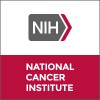
Rituximab, Methotrexate, Procarbazine and Vincristine Followed by High-dose Chemotherapy With Autologous...
CNS LymphomaCNS Brain Cancer1 moreThe purpose of this study is to determine the safety of this new treatment offered in this study. PCNSL can be cured in less than half of patients with standard treatment, a combination of chemotherapy and brain radiation. Also, the combination of chemotherapy and brain radiation may result in serious lasting side effects. Most patients older than age 60 develop memory problems, difficulty walking or inability to control their bladder. Some patients younger than age 60 also develop these side effects.

Clinical Study on SyB L-0501 in Patients With Indolent B-cell Non-Hodgkin's Lymphoma or Mantle Cell...
Non-Hodgkin's LymphomaMantle Cell LymphomaThe purpose of this study is to assess the antitumor effects and safety of bendamustine hydrochloride (SyB L-0501) in patients with indolent B-cell non-Hodgkin's lymphoma or mantle cell lymphoma.

Donor Peripheral Stem Cell Transplant, Fludarabine, and Busulfan in Treating Patients With Hematologic...
LeukemiaLymphoma2 moreGiving chemotherapy drugs, such as fludarabine and busulfan, before a donor peripheral stem cell transplant helps stop the growth of cancer cells. It also stops the patient's immune system from rejecting the donor's stem cells. The donated stem cells may replace the patient's immune cells and help destroy any remaining cancer cells (graft-versus-tumor effect). Sometimes the transplanted cells from a donor can also make an immune response against the body's normal cells. Giving cyclosporine and mycophenolate mofetil before and after the transplant may stop this from happening. PURPOSE: This phase II trial is studying the side effects of giving donor peripheral stem cell transplant together with fludarabine and busulfan and to see how well it works in treating patients with hematologic cancers.

CAT-8015 in Children, Adolescents and Young Adults With Acute Lymphoblastic Leukemia or Non-Hodgkin's...
Acute Lymphoblastic LeukemiaNon-Hodgkin's LymphomaA dose-escalation study to estimate maximum cummulative dose (MTCD) of CAT-8015 that can be safely administered to a participant.

Rituximab Plus 2CdA in Patients With Advanced or Relapsed Mucosa Associated Lymphoid Tissue (MALT)...
Lymphoma of Mucosa-Associated Lymphoid TissueThe purpose of this trial is to evaluate whether a Rituximab plus 2 CdA combination therapy is effective and safe in the treatment of patients with advanced or relapsed lymphoma of the mucosa associated lymphoid tissue (MALT).

Pazopanib to Treat Adults With Advanced Cancers and Varying Degrees of Liver Function
NeoplasmsLymphomaBackground: Pazopanib is an experimental drug that was designed to enter cancer cells and block the activity of proteins that are important for cancer cell growth and survival. This is the first study in which pazopanib is given to patients with different degrees of liver function. The safe dose for patients with normal liver function is already known. Objectives: To determine the safety and side effects of pazopanib given at different dose levels to patients with cancer who have different degrees of liver function. To find out how much pazopanib is in the blood at specific times. To determine if pazopanib is effective in treating advanced cancer in patients with different degrees of liver function. Eligibility: - Patients 18 years of age and older with an advanced solid tumor or lymphoma that cannot be treated successfully with standard therapies and who have normal or abnormal liver function. Design: Treatment: Patients are divided into 4 groups, based on their liver function. The first three patients in each group receive a low dose of pazopanib. The next three in each group receive a higher dose of pazopanib if no serious side effects were reported in the previous three. The dose is increased in succeeding groups of three patients until the maximum study dose is reached. Patients take pazopanib once a day by mouth in 21-day treatment cycles. Treatment continues until the cancer worsens, the patient develops severe side effects, the patient no longer wants to continue the study, or the doctor removes the patient from the study for other reasons. Monitoring: Blood pressure: Patients monitor and record their blood pressure twice a day after starting treatment. Blood tests: Patients have weekly routine blood tests. In addition, at week 3 of the first cycle and again after the highest safe dose has been determined, several blood samples are collected at frequent intervals to determine how the body handles the drug. Imaging studies: X-rays or scans or both are done to measure the extent of disease every 3 cycles. Physical examinations are done at periodic intervals.

Combination Chemotherapy, Rituximab, and Yttrium Y 90 Ibritumomab Tiuxetan in Treating Patients...
LymphomaRATIONALE: Drugs used in chemotherapy, such as doxorubicin, vincristine, and cyclophosphamide, work in different ways to stop the growth of cancer cells, either by killing the cells or by stopping them from dividing. Steroid therapy, such as prednisone, may be effective in treating cancer and blocking the body's immune response. Monoclonal antibodies, such as rituximab and yttrium Y 90 ibritumomab tiuxetan, can block cancer growth in different ways. Some block the ability of cancer cells to grow and spread. Others find cancer cells and help kill them or carry cancer-killing substances to them. Giving chemotherapy together with prednisone and monoclonal antibody therapy may kill more cancer cells. PURPOSE: This phase II trial is studying how well giving doxorubicin together with vincristine, cyclophosphamide, prednisone, and rituximab followed by rituximab and yttrium Y 90 ibritumomab tiuxetan works in treating patients with newly diagnosed large B-cell lymphoma.

Yttrium-90 Ibritumomab Tiuxetan Plus High-Dose BEAM Followed By ASCT For Relapsed B-Cell Non-Hodgkin...
LymphomaThis phase II clinical trial studies how well yttrium Y 90 ibritumomab tiuxetan, rituximab, and high-dose chemotherapy followed by peripheral blood stem cell transplant in treating patients with relapsed B-cell non-Hodgkin lymphoma. Monoclonal antibodies, such as yttrium Y 90 ibritumomab tiuxetan and rituximab, can block cancer growth in different ways. Some block the ability of cancer cells to grow and spread. Others find cancer cells and help kill them or carry cancer-killing substances to them. Radiolabeled monoclonal antibodies can find tumor cells and carry tumor-killing substances to them without harming normal cells. Giving monoclonal antibody therapy, radioimmunotherapy (RIT), and high-dose combination chemotherapy before a peripheral blood stem cell transplant may be an effective treatment for non-Hodgkin lymphoma.

Alemtuzumab and CHOP in T-cell Lymphoma
LymphomaT-Cell1 moreThe purpose of this study is to determine efficacy and safety of the monoclonal antibody MabCampath® (alemtuzumab) combined with chemotherapy in the treatment of T-cell lymphoma.

High-Dose Therapy Treatment in Patients With Follicular Lymphoma
Follicular LymphomaFollicular lymphomas are a subgroup of B-cell non-Hodgkin lymphomas, accounting for 15% to 30% of newly diagnosed lymphomas.1-3 Median survival varies from 5 to 10 years depending on the prognostic factors at diagnosis and response to first-line therapy.4-6 Whatever the treatment, no plateau appears on survival curves, and virtually all patients relapse; follicular lymphomas are ultimately progressive, and fatal.2,3,5 No reference first-line treatment is clearly defined. One of the most active therapies is still doxorubicin-based chemotherapy with or without interferon.7-9 New therapeutic approaches including purine analogs and anti-CD20 monoclonal antibody are promising and are progressively included in the management of these lymphomas.2,3,10-13 The role of high-dose therapy (HDT) as a salvage treatment for patients with relapsing follicular lymphoma is demonstrated by some authors; several reports have shown the superiority of HDT followed by autologous stem-cell transplantation, purged or unpurged, compared with conventional chemotherapy in terms of no relapse and overall survival.14-18 Only a few reports have been published showing HDT results as a first-line treatment for poor-risk patients with follicular lymphoma, and the results remain controversial.19-26 These data prompted the French Groupe Ouest-Est des Leucémies et Autres Maladies du Sang (GOELAMS) to conduct a prospective randomized trial using patients with newly diagnosed follicular lymphoma with a high tumor burden. A combined doxorubicin-based chemotherapy associated with interferon was compared to front-line HDT followed by purged autologous stem-cell transplantation.
